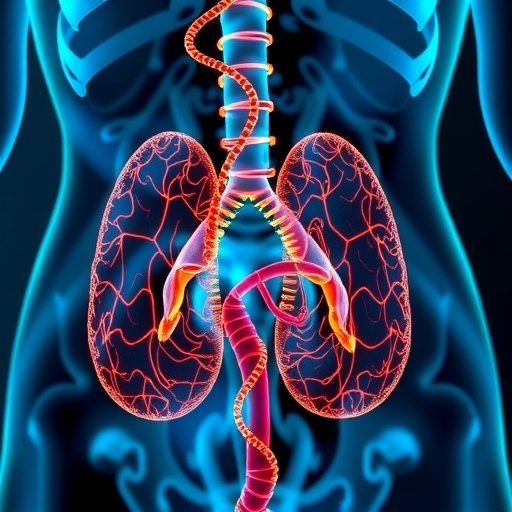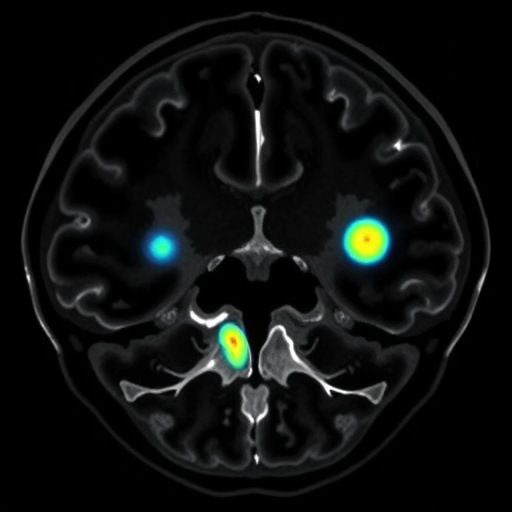Groundbreaking Advances from Memorial Sloan Kettering Illuminate Gene Regulation and Disease Mechanisms Across Biology
In a remarkable series of studies, researchers at Memorial Sloan Kettering Cancer Center (MSK), in collaboration with international partners, have unveiled transformative insights into gene regulation, cancer biology, and immunology, unveiling new technological innovations and biological paradigms. These findings range from decoding RNA-protein interactions across a vast landscape of eukaryotic species to unraveling the molecular intricacies of chromatin architecture, providing a wealth of mechanistic understanding with profound implications for medicine and biology. This suite of cutting-edge discoveries exemplifies the power of multidisciplinary approaches in addressing complex biological questions.
An international team spearheaded by computational biologist Quaid Morris, PhD at MSK and Timothy Hughes, PhD from the University of Toronto has launched EuPRI, a comprehensive platform that catalogues RNA-binding proteins (RBPs) and their target motifs across nearly 700 eukaryotic species, including plants, insects, and animals. RBPs are vital post-transcriptional regulators that determine RNA fate and gene expression modulation. Remarkably, the platform expands known RNA-binding motifs sevenfold for Arabidopsis thaliana alone, capturing data on nearly 35,000 proteins. Utilizing an advanced machine learning approach called Joint Protein-Ligand Embedding (JPLE), EuPRI predicts RNA binding preferences even for uncharacterized RBPs, revealing evolutionary adaptations and offering predictive capacity for mutation impacts on human diseases.
.adsslot_gy5NZkxJun{width:728px !important;height:90px !important;}
@media(max-width:1199px){ .adsslot_gy5NZkxJun{width:468px !important;height:60px !important;}
}
@media(max-width:767px){ .adsslot_gy5NZkxJun{width:320px !important;height:50px !important;}
}
ADVERTISEMENT
Ferroptosis, an iron-dependent regulated cell death process implicated in cancer and neurodegeneration, has now been linked to an unexpected oxygen-sensing mechanism. Alexander Minikes, PhD, and Pei Liu, PhD, in the laboratory of Xuejun Jiang, PhD, demonstrated that prolonged hypoxia induces robust ferroptosis resistance independent of the canonical HIF (hypoxia-inducible factor) pathway. Instead, oxygen scarcity inhibits KDM6A, a tumor suppressor histone demethylase modulating chromatin states, thereby reprogramming lipid metabolism towards ferroptosis resistance. Crucially, pharmacological inhibition of EZH2, an antagonist of KDM6A, restores ferroptotic susceptibility in bladder tumors bearing KDM6A mutations, suggesting novel therapeutic avenues to potentiate ferroptosis-based cancer therapies.
Delving into chromatin biology, MSK scientists, led by Axel Delamarre, PhD and senior author Iestyn Whitehouse, PhD, pioneered Proximity Copy Paste (PCP), a revolutionary method enabling high-resolution 3D mapping of chromatin structure at the nucleosome level. Applying PCP to yeast models, they characterized the spatial organization of nucleosome arrays, revealing dynamic chromatin condensation during mitosis orchestrated by cohesin-mediated loop structures. Notably, they identified stable overlapping nucleosome pairs, a heretofore underappreciated feature of chromatin architecture. These results enrich our understanding of genome organization’s role in gene expression regulation and DNA replication fidelity.
The neurobiology realm witnessed a significant leap as physician-scientist Lorenz Studer, MD and colleagues developed sophisticated 3D human brain organoid models that recapitulate the developmental trajectory of fast-spiking PVALB+ cortical interneurons—cell types implicated in schizophrenia pathology. Employing forebrain assembloids derived from human pluripotent stem cells, the team dissected interneuron maturation within a physiologically relevant environment. This approach unveiled multiple developmental defects consistent with schizophrenia-associated circuitry abnormalities, providing a potent platform for unraveling disease etiology and expediting drug discovery targeted at early neurodevelopmental stages.
In the arena of immunology, MSK researchers, led by graduate student Celeste Dang under Joseph Sun, PhD’s mentorship, identified Transcription Factor 19 (TCF19) as a critical regulator integrating innate and adaptive programs in natural killer (NK) cells during viral infection. Using innovative transgenic mouse models infected with cytomegalovirus, the study revealed that loss of TCF19 compromised NK cell mobilization and abrogated vital calcium signaling pathways, undermining antiviral defense. These findings deepen the molecular framework governing NK cell plasticity and could inform next-generation immunotherapies designed to heighten antiviral and antitumor immunity.
Together, these studies underscore the interconnectedness of gene regulation, chromatin dynamics, and cellular fate decisions, each elucidated through innovative technological advances and interdisciplinary collaboration. The EuPRI platform offers the global scientific community an unparalleled resource to explore eukaryotic RNA-protein interactions, potentially accelerating the discovery of genetic mechanisms underpinning diverse diseases. Insights into jumping genes and chromatin remodeling expand our understanding of cancer initiation and progression. The identification of a novel oxygen-sensing histone demethylase pathway in ferroptosis opens doors to therapeutic exploitation of cell death modalities. The refinement of 3D brain organoid models captures critical aspects of human neurodevelopment and disease, while the dissection of transcriptional control in NK cells reveals new facets of immune regulation.
Collectively, these scientific endeavors at MSK not only provide momentous conceptual breakthroughs but also pave the way for translational advances. By harnessing novel computational models, cutting-edge molecular tools, and sophisticated in vitro systems, researchers are better equipped than ever to translate molecular insights into therapies that could dramatically impact cancer treatment, neurological disease management, and viral infection control. The fusion of fundamental biology with clinical relevance exemplifies Memorial Sloan Kettering’s enduring commitment to innovation that bridges bench and bedside, promising profound impacts on human health globally.
Subject of Research:
Gene regulation mechanisms, chromatin architecture, transposable elements in cancer, ferroptosis regulation, brain organoid models for schizophrenia, transcriptional regulation in immune responses.
Article Title:
Groundbreaking Advances from Memorial Sloan Kettering Illuminate Gene Regulation and Disease Mechanisms Across Biology
News Publication Date:
Not explicitly provided; source indicates data as of 2025.
Web References:
– EuPRI resource and publication: https://www.nature.com/articles/s41587-025-02733-6
– Jumping genes and cancer study: https://www.nature.com/articles/s41588-025-02239-6
– Oxygen sensor in ferroptosis: https://www.cell.com/molecular-cell/abstract/S1097-2765(25)00580-5
– Proximity Copy Paste (PCP): https://www.cell.com/molecular-cell/fulltext/S1097-2765(25)00547-7
– Brain organoids in schizophrenia: https://www.cell.com/neuron/fulltext/S0896-6273(25)00475-1
– TCF19 in NK cells: https://www.nature.com/articles/s41590-025-02238-z
References:
Provided within the linked journal publications above.
Image Credits:
Memorial Sloan Kettering Cancer Center
Keywords:
Basic research; Cancer research; Gene regulation; Chromatin architecture; RNA-binding proteins; Ferroptosis; Brain organoids; Schizophrenia; Natural killer cells; Transposable elements; Immunology; Stem cell biology
Tags: cancer biology advancementschromatin architecture discoveriesEuPRI platform for RBPsevolutionary adaptations in gene expressiongene regulation breakthroughsimmunology research innovationsmachine learning in gene researchmultidisciplinary research in biologypost-transcriptional regulation mechanismsRNA-binding proteins catalogRNA-protein interaction studiestransformative insights in medicine





